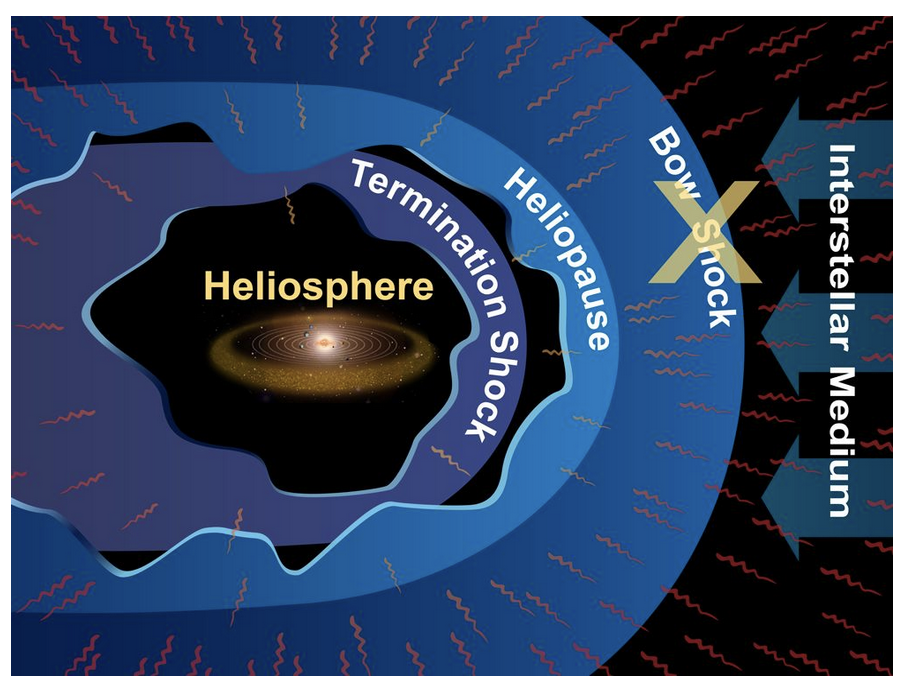News Excerpt:
Scientists believe Earth may have briefly lost protection from the sun around two million years ago, left to endure the extreme environment of interstellar space as the solar system passed through a dense cloud of gas and dust between stars.

Ice Ages and the Solar System's Position
- About 2 million years ago, early human ancestors lived alongside prehistoric animals like mastodons and sabretooth tigers.
- This was during the last ice age that ended around 12,000 years ago.
- Ice ages are caused by factors like the planet's tilt, rotation, CO2 levels, plate tectonics, and volcanic activity.
- However, the position of our solar system within the Milky Way galaxy may also influence radical climate changes like ice ages.
The Heliosphere and Its Role
- Our entire solar system is enveloped in a "giant bubble" of protective plasma called the "heliosphere" that comes from the sun.
- This protective heliosphere shield is created when solar winds press on the interstellar medium drifting between stars in the Milky Way galaxy.
- The heliosphere is constantly replenished by a flow of charged particles streaming out from the sun past Pluto.
- The heliosphere shields Earth's surface from harmful radiation and galactic rays that could potentially impact the DNA of living organisms.
- This shielding is crucial and believed to be integral to the emergence and evolution of life on Earth by many scientists.
Encounter with the Interstellar Cloud
- Specifically, around 2 million years ago, the solar system may have encountered a dense patch of interstellar gas and dust.
- This dense interstellar cloud could have interfered with the "solar wind" of charged particles from the Sun hitting Earth.
- The interference with the solar wind may have caused plunging temperatures on Earth.
- The research team thinks a cold interstellar cloud could have once obstructed the solar wind in a way that compressed the heliosphere.
- This compression may have temporarily removed Earth and other planets from the protection of the heliosphere for a short cosmic period.
Impacts of the Encounters:
- Researchers stated that this paper shows not only that stars move, but they also encounter drastic environmental changes as they move through the galaxy.
- Sophisticated computer models to visualize the positioning of the Sun, heliosphere, and solar system 2 million years ago.
- They tracked the "Local Ribbon of Cold Clouds" system as it moved through the Milky Way galaxy over time.
- One dense cloud from this system called the "Local Lynx of Cold Cloud" could have clashed with the heliosphere.
- This clash would have exposed Earth directly to the interstellar medium containing heavy and radioactive elements from supernova remnants.
- The heliosphere normally blocks these particles, but without it they could have rained down on Earth.
- This may explain increased iron-60 and plutonium-244 isotopes found in Antarctic ice cores and on the Moon from 2 million years ago.
- The timing of the heliosphere's clash with the Local Lynx cloud corresponds to a cooling period on Earth 2 million years ago.
- Opher theorizes the Local Lynx cloud could have compressed the heliosphere for hundreds to a million years, depending on its size.
- After the dense cloud passed, the heliosphere would have eventually re-formed around the planets.
Way Forward:
- The exact impact this cold interstellar cloud had on Earth, including whether it could have sparked an ice age, is still a matter of research.
- The team will now investigate further back in time to identify other instances when the solar system encountered dense interstellar clouds and see if these align with ice ages.


